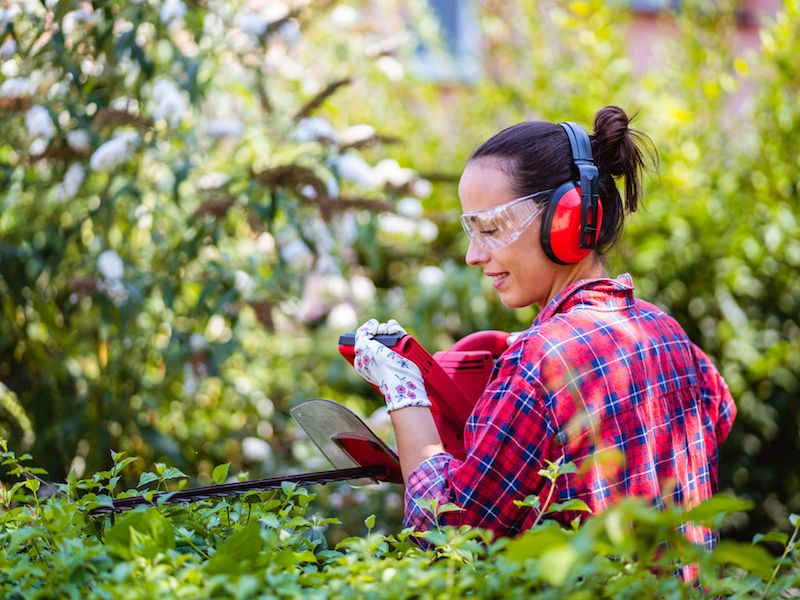
Protecting your hearing is similar to eating right. It’s hard to know where to begin even though it sounds like a good idea. This is particularly true if you don’t consider your daily environment to be particularly noisy and there aren’t any obvious dangers to your ears. But day-to-day life can stress your ears and your senses, so practicing these hearing protection tips can help safeguard your auditory acuity.
The more you can do to slow down the degeneration of your hearing, the longer you’ll be able to enjoy the sounds around you.
Tip 1: Wearable Ear Protection
Using ear protection is the most practical and simple way to safeguard your hearing. This means that diminishing loud and dangerous sound is a basic step you need to take.
For most people, this will mean wearing hearing protection when it’s called for. Two basic forms of protection are available:
- Ear Muffs, which are put over the ears.
- Ear Plugs, which are put in the ear canal.
Neither form of hearing protection is inherently better than the other. Each style has its advantages. Your choice of hearing protection should, most importantly, feel comfortable.
Tip 2: Know When Sound Becomes Harmful
But how can you tell when to wear hearing protection? We’re used to connecting dangerous noise with painful noise. But much lower volumes of sound can damage your ears than you might realize. The sounds of traffic, as an example, are loud enough to start damaging your hearing after only a couple of hours. Knowing when sound becomes dangerous, then, is a vital step in protecting your hearing.
The following threshold is when sound becomes harmful:
- Over 100 dB: This is where you can damage your hearing very rapidly. Anything above this limit can damage your hearing in minutes or seconds. Rock concerts and jet engines, for instance, can injure your ears in about thirty seconds.
- 95-100 dB: This is the normal level of your earbuds or the level of farm equipment. This volume of noise becomes damaging after 15-20 minutes.
- 85 decibels (dB): This volume of sound is harmful after about two hours of exposure. Your hairdryer or a busy city street are both situations where you will find this level of sound.
Tip 3: Make Your Phone Into a Sound Meter
We can take steps to minimize our exposure, now that we have a concept of what volumes will be hazardous. The trick is that, once you’re out and about in the real world, it can be difficult to measure what’s loud and what isn’t.
That’s where your smartphone can become a handy little tool. There are dozens of apps for iPhone, Android, and everything in between that turn your device’s microphone into a sound meter.
In order to get an idea of what hazardous levels of noise actually sound like, use your sound meter to check the decibel level of everything you are hearing.
Tip 4: Keep Track of Your Volume Settings
A smartphone with earbuds is normally the way people listen to music these days. This sets up a risky situation for your hearing. Your ears can be significantly harmed if you keep your earbuds too loud over a long period of time.
That’s why protecting your ears means keeping a sharp eye on your volume management. You should not raise the volume in order to drown out sounds elsewhere. And we suggest using apps or settings to make sure that your volume doesn’t unintentionally become dangerously high.
Earbud use can become something of a negative feedback loop if your hearing starts to wane; you could find yourself consistently raising the volume of your earbuds so that you can compensate for your declining hearing, doing more damage to your ears in the process.
Tip 5: Have Your Hearing Tested
You might think of a hearing test as something you get when your hearing has already started to decline. Without a baseline to compare results to, it’s not always easy to identify a problem in your ears.
Scheduling a hearing screening or exam is a good way to generate data that can be used for both treatment and analytic purposes, ensuring that all of your future hearing (and hearing protection) choices have a little bit of added context and information.
Pay Attention to Your Hearing
It would be perfect if you could always safeguard your hearing without any hassles. But challenges are always going to be there. So whenever you can and as often as possible, protect your ears. You should also get your hearing examined regularly. Hopefully, these tips will give you a good start.
